With restoration of Mumbai's colonial-era pyaavs underway, we find out what makes these waterholes unique

Rahul Chemburkar at the Ramji Sethiba Pyaav. Pics/Atul Kamble
Picture this: We are at Horniman Circle in Bombay of the late 1800s. It's a scorching, hot afternoon ub May, and unlike the overpopulated megalopolis that the city is today, this township is sparse with human traffic at its bare minimum. At one end of the circle, a crowd of long-distance travellers, baniyas, and brokers has gathered around a pyaav, a drinking water fountain, which is hidden under the shade of a banyan tree. The men appear to be engaged in an animated discussion, with the drinking space serving as the platform.
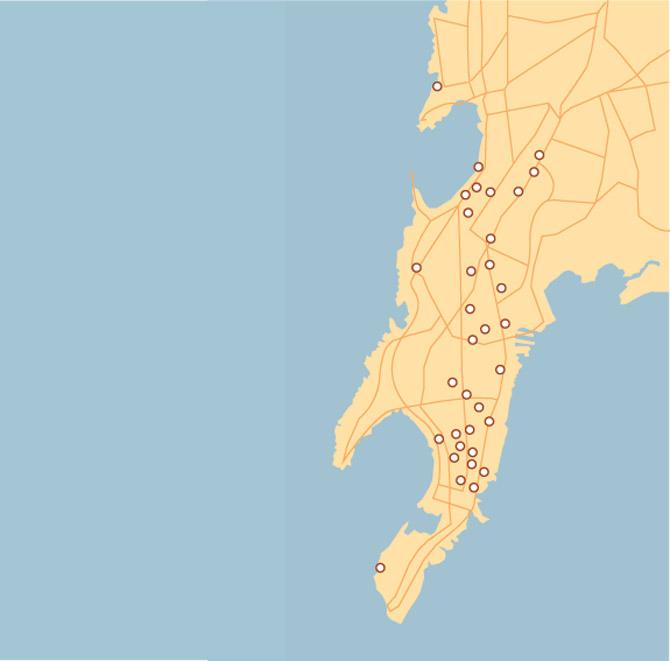
The Pyaav Map of Mumbai COURTESY/Vaastu Vidhaan Projects Graphic/Uday Mohite
ADVERTISEMENT
A typical urban feature
Back in 2016, when conservation architect Rahul Chemburkar started the Mumbai Pyaav Project on social media to campaign for the restoration of these colonial-era fountains — built between 1860 and 1945 — he wanted to recreate the cultural movement that they were most known for. "The pyaavs were a typical urban feature," he says. Their construction was part of a philanthropic, water charity movement, which gained steam in the late 19th century. "The wealthy locals, sensing the need for these fountains, contributed to the cause, while the government laid out the waterworks," he adds. It wasn't long before the pyaavs, named after its contributors, became a meeting point.
Today, the city has at least 30 such fountains listed with the BMC under Grade-II and Grade-III heritage structures, many of which are lying in a state of disrepair. But Chemburkar's efforts towards their conservation has ensured that his passion project finally becomes a reality. Last year, the BMC commissioned his firm Vaastu Vidhaan Projects to restore all the pyaavs in the city. Work has already begun in full speed. After restoring the Kothari Pyaav near GPO this month, next on Chemburkar's agenda is the Anand Vithal Koli Pyaav on Gokhale Road and Sir Cowasji Jehangir's Pyaav in Kalachowki, which will be ready next year.
Combining Neo-Gothic and Indo-Saracenic styles, the pyaavs represent an important aspect of the city's architecture. To acquaint ourselves with this socio-cultural heritage, we joined Chemburkar on a pyaav heritage walk.
Anand Vithal Koli Pyaav
Location: Gokhale Road, Dadar
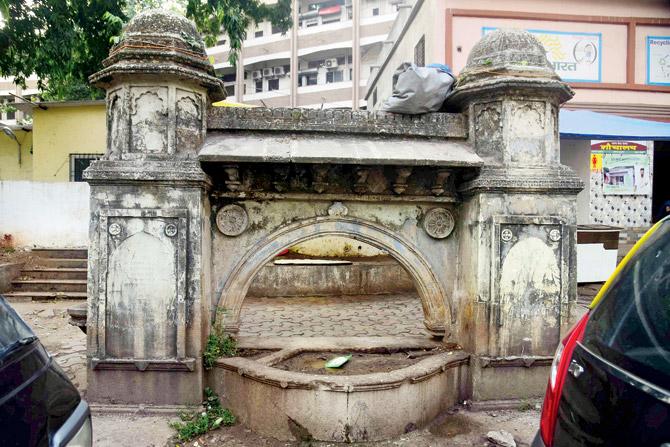
This fountain is said to have once served workers from the nearby textile mills of Jupier, Shriram and Stanrose. Made using Kurla stone, the arch structure has two piers each with one water trough. At the centre is a trough for animals, currently filled with silt. What makes it unique is that it incorporates European and Indo-Saracenic styles. Set to be restored next year, the pyaav will have more architectural additions. "The paver blocks will be replaced with a cobble-stone pathway, and we also intend to add benches, a clock post, a leisure fountain and mural around it," says Chemburkar.
Keshavji Naik Pyaav
Location: Masjid Bunder
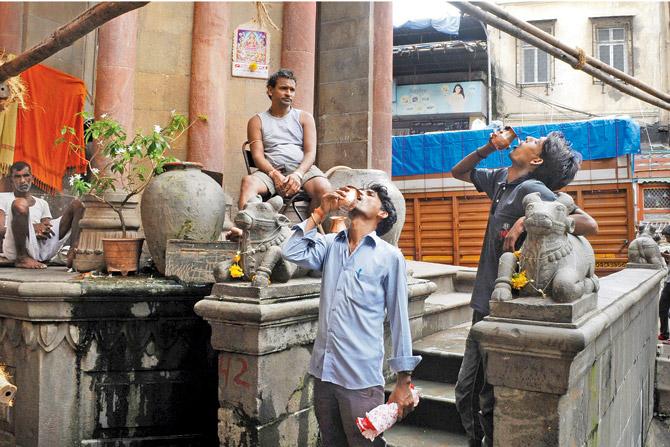
One of the more elaborate drinking fountains in the city, the Keshavji Naik Pyaav was restored three years ago. The huge canopy-like structure, which was previously exploited by hawkers, now has a person, who serves drinking water in brass vessels to passersby, says Chemburkar, who helmed the project. Its unique feature is that it's not only a drinking fountain, but also a clock tower and resting place. "It also has Nandi motifs near the flight of stairs, which makes it sacred. The elephants and peacocks sculpted on it can also be interpreted as a celebration of water. The whole structure has a feel of a shrine, because it has a shikhar (spire)," he says.
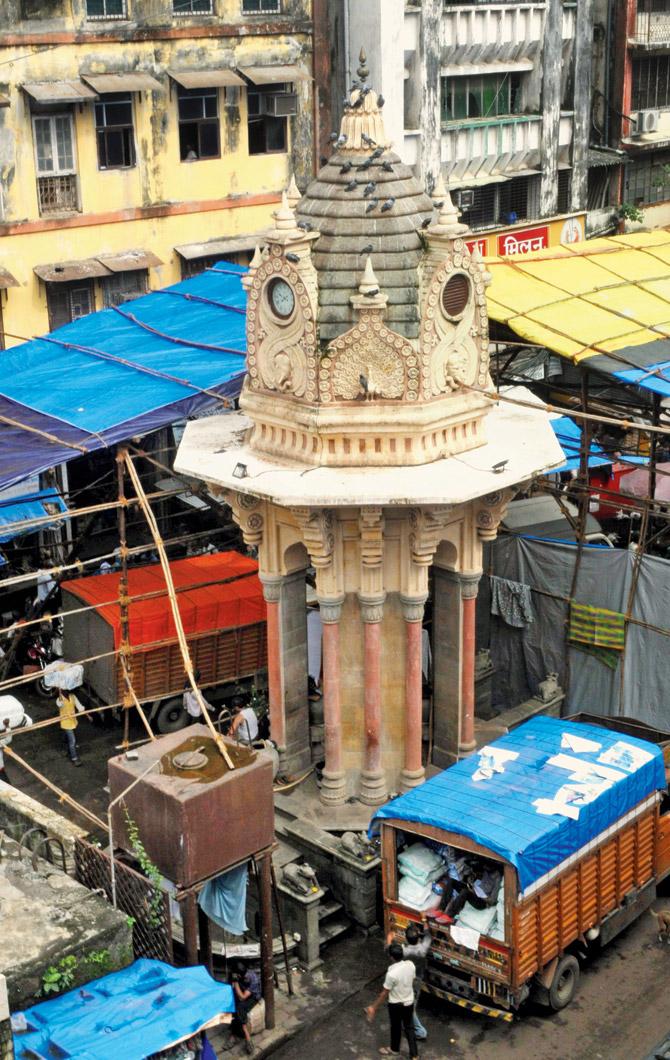
Devidas Purbhoodas Kothari Pyaav
Location: Opposite GPO, Fort
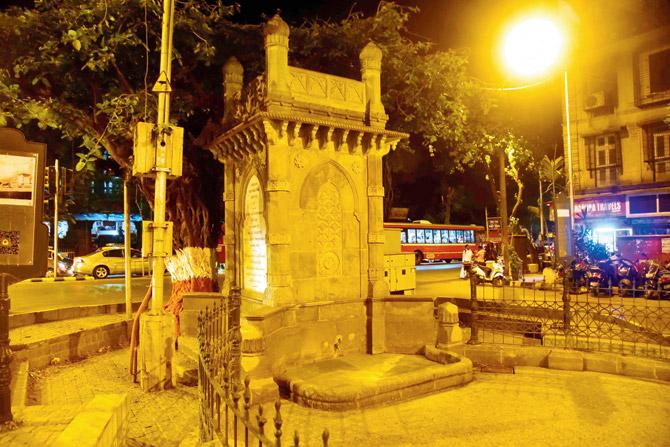
This recently-restored pyaav is a square stone structure built using a variety of stones such as Porbandar limestone, Malad Trachyte stone and Red Agra sandstone. Excavations carried out during conservation resulted in the discovery of an animal and bird water trough, which now serves pigeons at Kabutarkhana that abuts the fountain.
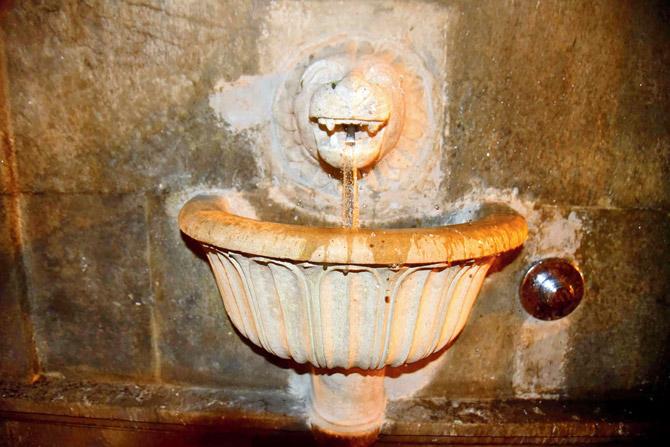
While it has a functional drinking facility — a lion spout serves filtered water from a tank — what we most liked is the art installation that depicts the activity of igniting a gas street lamp, which used to be the common practice in colonial Bombay.
Ramji Sethiba Pyaav Location: Shivaji Park, Dadar
This basic looking pyaav's yellow ochre colour comes from the Malad stone used for its construction. Originally boasting of two lotus-shaped troughs on opposite ends with gargoyles that served as spouts to supply drinking water, part of this decrepit pillar-like structure today has been covered by paver-blocks, due to which one doesn't get a sense of its original height. Restoration of this pyaav, which is likely to cost Rs 15 lakh, would include polishing the stone, carving the troughs and spouts and providing a drinking water facility.
Catch up on all the latest Crime, National, International and Hatke news here. Also download the new mid-day Android and iOS apps to get latest updates
 Subscribe today by clicking the link and stay updated with the latest news!" Click here!
Subscribe today by clicking the link and stay updated with the latest news!" Click here!







